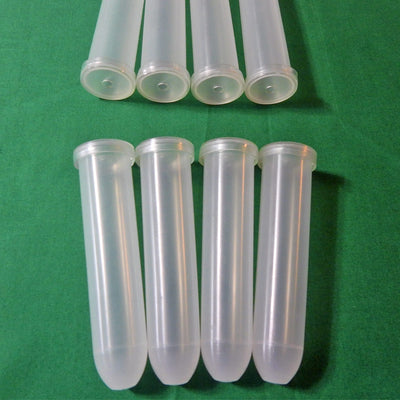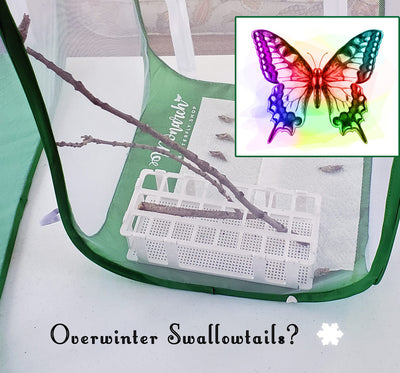Raising Butterflies Blog
Raising Hope for the 2019 Monarch Migration- Raise The Migration 7 Results

Raise The Migration is an annual North American challenge to raise monarch butterflies to release for fall’s annual monarch migration. The time has come to share your 2019 experience and raise it forward…

The raising season is coming to an end, so we’d love to hear how many butterflies you released for fall’s annual 2019 monarch migration…and more importantly, what lessons you’ve learned through this amazing raising experience?
If you’ve still got some raising to do, raise on! But please post in the comment box at the bottom of this page after you’ve released your last butterfly.
Every year, I start Raise The Migration in early August, but monarchs raised at that time aren’t actually migration generation butterflies…they’re actually the parents to that amazing generation of travelers.
There’s no way to tell whether butterflies will mate or migrate, but one telltale sign of a migration generation butterfly is its size, which is dependent on how much the caterpillar eats. The first super-sized caterpillars start to form chrysalides around the first week of September in our northern region…
In the garden, you can tell non-migratory butterflies by their worn out wings. Non-migratory males are also more aggressive, chasing off potential competition while seeking out female companionship…migratory monarchs are in sexual diapause and only interested in stocking up on nectar for the long journey ahead.
So how did our Raise The Migration Monarchs fare this season and what lessons did we learn raising forward?
===========================================================================================
If you’re interested in a step-by-step guide digital guide with free updates (before each monarch season begins in spring) please check out the monarch raising guide by clicking this butterfly photo:

For anyone who purchases the guide (or any other item) from Monarch Butterfly Life, you will be invited to our closed facebook group where you can discuss raising monarchs with other raisers and post your photos.
===========================================================================================
I am counting our 2019 migration generation as all butterflies that eclosed August 30th and after.
Raise The Migration 2019 Results
This season was unlike all its predecessors in one important respect: the majority of the monarchs we raised were brought in as caterpillars.
Starting from caterpillars is generally less successful than eggs, but I was unpleasantly surprised by what transpired…by far, the worst results we’ve had in seven seasons.
Here are Raise the Migration results from the past six seasons:
2018- 93% survival rate
2017- 100% survival rate
2016- 96% survial rate
2015- 96% survival rate
2014- 90% survival rate
2013- 100% survival rate
As you can see from the results, this raising system is consistently producing healthy monarchs to help support the struggling monarch population.
Caterpillar Escapes
None. There is no room for escape in sealed food containers and mesh cages designed for raising butterflies.
Unexplained Caterpillar Deaths
One instar 2-3 caterpillar stopped eating. On day 4 of the hunger strike, I euthanized it so it wouldn’t starve to death.
Caterpillar Diseases and Parasites?
None that were apparent
Accidental Deaths?
We often hang chrysalides on our kitchen overhang. A female butterfly looked ready to emerge at 9pm at night so i knew she would emerge long before anyone was up. For this reason, I should have moved her to a cage floor where she could climb the mesh.
She emerged successfully and expelled the reddish meconium, but shortly after she must have fallen from the chrysalis on to the floor. Here wings dried improperly and there was no way she would ever take flight.
This was the first butterfly we have had ‘fall’ in three years.
I tested her for OE with my pocket microscope and she did not have any spores present. This was an unfortunate (and 100% preventable) accident.
Chrysalis Problems?
This is where things went off the rails. Late season milkweed often has more pathogens so you never know what the caterpillars were exposed to before you bring them in.
in Minnesota, this has been our rainiest year on record since 1871! Excess rain is a catalyst for spreading bacteria and, for the first time ever, we had issues with bacterial diseases. I believe 6 monarchs total were affected. All 6 have noticeably small chrysalides…especially for the migration generation.
2 of the chrysalides just turned black:

1 other chrysalis started to develop butterfly markings simultaneously with irregular black marks:

…that monarch didn’t emerge either. 🦋☹️ I placed this chrysalis in a sealed plastic bag with the two previous. A few days later, the real issue was revealed by a hole in the chrysalis and a small, red pupae in the bag:
 Tachinid Fly Info
Tachinid Fly InfoUnfortunately, the problems didn’t stop there…
Butterfly Eclosures
The other 3 chrysalides produced mini monarch butterflies. Two were released and seemed to be strong flyers…the third had its antennae and proboscis stuck in the chrysalis…I tried to remove them unsuccessfully after spraying with water but I don’t think they were fully formed anyway. That butterfly was euthanized. It tested negative for OE.
The Last Monarch of 2019
This Minnesota monarch was raised from an egg and grew to be a pleasantly plump caterpillar. I took down this monarch’s perfectly formed chrysalis to get a sneak peak of the sex:
 Once you learn what to look for, the answer is obvious 😉
Once you learn what to look for, the answer is obvious 😉So how can you tell the sex of your monarch from a chrysalis view? Find the answer here: Male or Female Monarch?
Final Results
When I started this event 7 years ago, I was much more focused on the numbers, but as this event has evolved, I realize this isn’t what it’s all about.
What most important is that we’re all learning and improving our raising processes so that we can support healthier monarchs raising forward. 🐛
And when you have an ‘off’ year (like I did in 2019!) it’s important to figure out why, and make a plan to improve your raising process next season. I’ll discuss some of my lessons learned below, but first…
For those that appreciate the hard data, here are my official results from RTM 2019:
1 accidental death
4 disease or parasite issues
1 unexplained death
14 healthy males
11 healthy females
81% survival rate 😐
On September 29th, a beautiful monarch female emerged from the chrysalis pictured above. On September 30th, she was released into the garden where she stocked up on nectar for a good 8-9 hours. Her favorite nectar source was our Mexican flame vine plant:
She left with 3 other migrators early October 1st…Safe Travels! 👋 🦋
Lessons Learned?
Even after 40 years of raising, I’m still learning lessons that make this process better for both raiser and monarch. In 2019 I discovered:
- If a butterfly will emerge while you are sleeping or gone, make sure it has the best chance possible to ‘help itself’ if you’re not there. For my set up, this means placing the chrysalis back inside the cage.
- Raising in Outside Conditions (natural light, temps, humidity) so monarchs receive environmental cues to migrate- YES
- Raising Outside where monarchs are exposed to excess rain– NO 🐛💦☠️
- Monarch caterpillars instinctually seek a good hiding place for their chrysalides…don’t provide them with one that makes your raising efforts more difficult:
- A few caterpillars (over the summer) decided that hanging from the floral racks was a good idea to enter the 3rd stage of metamorphosis: What to do if your caterpillar hangs from a floral tube rack? (don’t skip the section on how to PREVENT this…it works 100%!)
- To help caterpillars find a suitable hanging spot, try placing the green handles of your mesh cage on top of the roof. These narrow bands of shadow were a popular place to form chrysalides in 2019, and this will (sometimes) entice them to spread out a bit.
- I already knew this, but was reminded with a swift slap 👋 from mother nature…your best chance to raise healthy monarchs starts with monarch eggs.
And now, here’s the part I’m most excited about…hearing about all the valuable lessons you learned raising monarchs over the past few weeks!
Share Your Results?!
Please share your results below by letting us know how many monarchs you released to help boost the struggling monarch population…remember to include your location.
More importantly, please share the most valuable lesson(s) you learned about raising monarch butterflies, that you believe can help others raising forward.
Thank you for helping to Raise the Migration in 2019 and check out our Top Raising Tools and Info for holiday gift ideas and to prepare for the 2020 season











